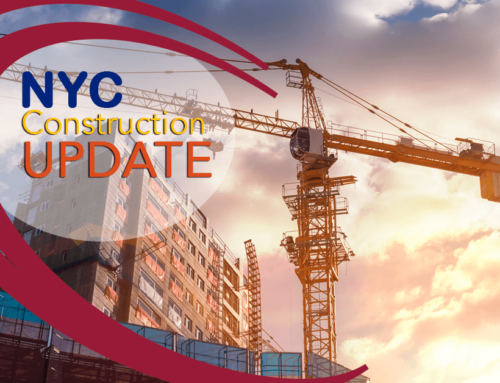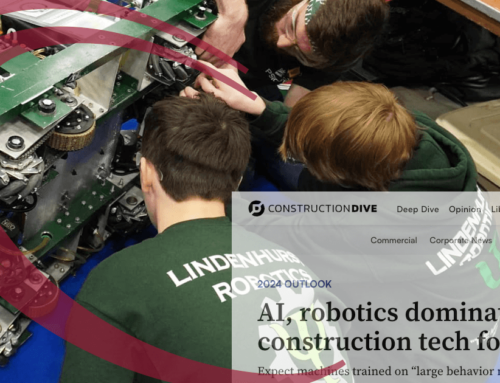From Construction Dive:
Falll protection rules are broken most often on construction sites, and the consequences can be fatal. Fall-related violations accounted for 359 out of 899 construction-related deaths in 2014 and more than 20,000 citations in the last four years, based on data from the Occupational Safety and Health Administration.
The trend appears to be continuing, and it extends beyond construction. In a preview last month of its annual report on general workplace safety violations, OSHA named the 10 most-cited violations. Fall protection topped the list with 6,929 violations for the year.
Meanwhile, the agency continues to crack down on fall hazards. Construction contractors have been fined hundreds of thousands of dollars in recent months for failing to provide adequate fall-protection equipment and related training to ensure proper use. The administration also increased its maximum penalty payout by 78% as of August to match inflation while raising the stakes for companies lax on safety — fall protection included.
We asked safety consultants what construction companies could be doing to better protect their employees from fall hazards.
1. Set uniform requirements
OSHA requires protection against falls beginning at 6 feet on construction projects, but options vary. However, the administration generally favors systems that prevent falls, such as guardrails, versus fall-protection mechanisms, such as a fall-arrest system or safety net. Having workers tie-off at the same height “makes it simpler for a contractor to comply with on the job site,” said Lari Kippen, director of heavy construction and specialty compliance at OSHA Environmental Compliance Systems (OECS), a safety consultancy based in Bloomington, MN.
2. Communicate expectations early and often
The preconstruction team meeting is an ideal place to present expectations for fall protection, including the kind of protection or arrest systems in place and their limits, proper tie-off points, harness inspections and equipment demonstrations.
Contractors and subcontractors should also provide documentation to show that their workers have been trained to use the type of safety equipment employed on that specific job site.
3. Know your gear
“One of the biggest things that we see is an employer that doesn’t typically tie off or utilize fall protection gets on a site where it’s expected of them and so they buy new equipment and nobody on their crew knows how to use it, install it, maintain it or adjust it,” Kippen said. “The standard is very explicit: You cannot put people in fall protection [situations] without them understanding all of those aspects.”
The time and cost involved in purchasing fall-protection and arrest systems and training employees to use them is a key contributor to the lack of fall-hazard awareness on job sites. “The assumption is, ‘Anybody can wear a harness,’ and that’s not the case,” said Tim Peterson, vice president of operations for OECS.
4. Plan ahead
Contractors also often don’t consider that fall-protection needs are likely to change throughout the course of a project — meaning that the ability to forgo tying off one day doesn’t necessarily mean that will be the case the next. “In other words, [contractors] get up on a roof and realize that the parapet height won’t be tall enough once the insulation is put on and then all of a sudden, everybody on that roof is exposed to a fall hazard,” Kippen said. “It somebody would have looked at the thickness of the insulation with the parapet height, they’d have known it wasn’t going to be tall enough.”
OSHA also recommends continuous evaluation of fall-protection systems to determine whether changes need to be made.
Planning ahead is key to avoid the need to stop a job to meet OSHA fall-protection requirements or going ahead without the necessary defenses. It also ensures that the project team has designated the correct amount of tie-off points for the number of people needing them. “It boils down to the very beginning of analysis training and inspecting what elements are going to change what part of that job, and then designing within the job rather than reacting,” Peterson said. “After the fact is a little bit late.”
5. Close the revolving door
In a tight labor market, it’s common for contractors to rotate workers in and out based on the needs of the projects in their portfolio. However, Kippen and Peterson note, experience is gained on the site, so rotating people can present a challenge to keeping up fall-protection rules, as well as maintaining a general understanding of the project workflow, systems and requirements.
Typically, the subcontractor must vet their own crew and share that information with the general contractor. However, the general or controlling contractor can help mitigate risks presented by the revolving door of workers on the job site by requiring documentation of training and not allowing them on the site without it.
For contractors inclined to reserve the best-trained workers for sites with the biggest hazards and send workers with little or no training to sites with a perceived lesser hazard, be warned. “People have this belief that they can’t get hurt falling 10, 12 feet,” Kippen said. Distance is only part of the equation. What individuals fall on top of also poses a danger.
A roofing contractor in Homestead, FL, recently fell 14 feet off a roof and partially impaled himself on a metal fence post. OSHA handed his employer, Fast Carpentry Services, one willful and one repeated safety violation, along with a $152,145 fine, as the agency said it failed to provide suitable fall-protection equipment and training. OSHA said the incident qualified the company for its Severe Violator Enforcement Program.
Kippen and Peterson advise companies seeking to avoid fall-protection violations to: plan ahead for the types of hazards present on the job site, educate the project team of the preplanning, use the proper equipment to protect employees and enforce fall-protection rules consistently.
Fall protection has as much to do with human behavior as it does with conditions presented on the job site. “If you look at protecting that employee 100%, OSHA’s going to come in there and, in most cases, be on the same page as you,” Kippen said. “If you look at it only complying with OSHA, you can potentially still put an employee at risk.”
Read more from Construction Dive…





